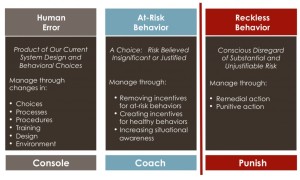In many nursing homes, one of the first items on every day’s agenda is the daily stand-up. Some communities have these quick check-ins down: organized, routine, and efficient, highlighting admissions, needed assessments, and any issues from the 24-hour report. I’ve also seen these meeting sprawl for 20 or 30 minutes, or divert into side discussions that occupy everyone’s time to solve an issue between two departments.
Scrum is a software development methodology based on a flexible, iterative model of team collaboration. When implemented effectively, scrum has helped software developers improve productivity by up to 500% by staying focused on the most important challenges, collaborating as a team, and responding quickly to new challenges. You might think scrum is a funny word for a development strategy, but it has a very important background. In rugby, scrum is the way that play is restarted, similar to a tip-off in basketball. Instead of being an individual effort, like the tip-off, however, scrum involves the whole team working together to gain control of the ball. While individual strength and skill is important, no team can compete effectively unless they work flawlessly together. The same idea has been applied to software teams. (And has something to teach healthcare teams.)
While there is a lot to scrum, one of the key features is the daily stand-up meeting that involves each person on a cross-functional development team meeting briefly. What’s involved in the daily scrum meeting?
- All members come to the meeting prepared. In post-acute care, this means accurate information about admissions, discharges, assessments and any resident issues.
- The meeting starts at the same time each day. Some communities do this well already, though oftentimes I’ve seen meetings delayed until the administrator or DNS arrives. In a scrum daily meeting, the meeting starts, even if someone isn’t present, and it’s the missing person’s responsibility to learn the information missed.
- The meeting is timeboxed. Timeboxing is an important project management tool that limits a meeting to a specific length of time. This keeps issues focused and means that issues are prioritized or dealt with in separate (and usually more efficient) ways. For a 100- 150 resident nursing community, 15 minutes should be plenty of time for a stand-up.
- Anyone is welcome to attend (though typically only involved core roles speak), and meetings are oftentimes held in hallways or corridors to emphasize the open component. This is an important commitment to openness that allows other staff to stay abreast of development efforts throughout the organization. With an open stand-up, CNAs, cooks, and housekeepers could see some of the nursing home “machinery” that is critical to the day-to-day work.
- The meeting consists of each core person answering three questions: what did I do yesterday? what am I planning to do today? Am I experiencing any stumbling blocks or impediments to getting my work done? The “team lead” (scrum master) documents any challenges, but no discussion occurs during the stand-up. Rather, issues are dealt with in smaller groups, involving only those people required to resolve the situation.
What I love most about the scrum meeting is the focus on what’s happening and whether there are any roadblocks to people completing their work. This approach fits well with Lean philosophy (along with servant leadership, which is eminently vogue in LTC right now), and emphases the role of the team lead as an enabler: their primary role is to ensure the team is able to do its work. This person is responsible to remove identified roadblocks, keep the team on track, and prevent outside distractions (in long-term care, think regulatory issues, corporate initiatives not related to the work, interpersonal challenges between department staff, etc.) from interfering with completing necessary work.
Streamlining and focusing stand-up can have a big impact on staff’s ability to work effectively throughout the day. If your stand-up wanders, or doesn’t focus on the most crucial info to share, look at whether the scrum daily meeting concepts above might be able to improve this crucial meeting.


